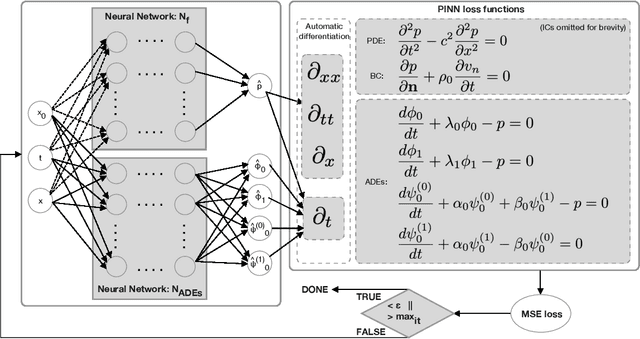Nikolas Borrel-Jensen
Sound propagation in realistic interactive 3D scenes with parameterized sources using deep neural operators
Aug 09, 2023Abstract:We address the challenge of sound propagation simulations in $3$D virtual rooms with moving sources, which have applications in virtual/augmented reality, game audio, and spatial computing. Solutions to the wave equation can describe wave phenomena such as diffraction and interference. However, simulating them using conventional numerical discretization methods with hundreds of source and receiver positions is intractable, making stimulating a sound field with moving sources impractical. To overcome this limitation, we propose using deep operator networks to approximate linear wave-equation operators. This enables the rapid prediction of sound propagation in realistic 3D acoustic scenes with moving sources, achieving millisecond-scale computations. By learning a compact surrogate model, we avoid the offline calculation and storage of impulse responses for all relevant source/listener pairs. Our experiments, including various complex scene geometries, show good agreement with reference solutions, with root mean squared errors ranging from 0.02 Pa to 0.10 Pa. Notably, our method signifies a paradigm shift as no prior machine learning approach has achieved precise predictions of complete wave fields within realistic domains. We anticipate that our findings will drive further exploration of deep neural operator methods, advancing research in immersive user experiences within virtual environments.
Physics-Informed Neural Networks (PINNs) for Sound Field Predictions with Parameterized Sources and Impedance Boundaries
Sep 24, 2021


Abstract:Realistic sound is essential in virtual environments, such as computer games and mixed reality. Efficient and accurate numerical methods for pre-calculating acoustics have been developed over the last decade, however, pre-calculating acoustics makes handling dynamic scenes with moving sources challenging and requires intractable memory storage. A Physics-Informed Neural Networks (PINNS) method is presented, learning a compact and efficient surrogate model with parameterized moving sources and impedance boundaries, satisfying a system of coupled equations. The trained model shows relative mean errors below 2%/0.2 dB, indicating that acoustics with moving sources and impedance boundaries can be predicted in real-time using PINNs.
 Add to Chrome
Add to Chrome Add to Firefox
Add to Firefox Add to Edge
Add to Edge